
Good to know! Small and large stores can remain open on Good Friday, a public holiday. However, on Easter Monday, stores larger than 200 square meters, including supermarkets and clothing stores, are required to close.
If you’re coming to Prague for Easter, you won’t be disappointed! Easter is celebrated with dignity in the Czech Republic: markets, concerts and a special restaurant menu await you. Although the Czechs are among the most atheist in the world (3rd country after China and Japan, it is said), Fridays (for only a few years now, after a break under Communism) and Mondays are public holidays.
Easter traditions, both religious and pagan, are very much alive in the Czech Republic. The Czech word for Easter is Velikonoce (the great night, referring to the resurrection of Christ). However, since the Communist era, this resurrection is celebrated less than springtime and the awakening of nature after a long winter (it should be noted that in the Moravian region, the religious aspect is more prevalent).
Here are just a few of the many traditions:
- Starting on “Blue Monday” (Modré pondělí), we go on a spring-cleaning spree. We also take the opportunity to throw away broken objects and repaint the walls white.
- On “Gray Tuesday” (Šedivé úterý), we remove cobwebs.
- Black Wednesday (Černá středa, also known as Naughty Wednesday) is the day when Judas betrayed Jesus. If you frown, you’ll frown every Wednesday of the year!
- Green Thursday” (Zelený čtvrtek) refers to the Last Supper, Christ’s last supper: we eat green (parsley, nettles, spinach) and eating raw peas will protect against toothache all year round. On the same Thursday, the bells ring one last time in the morning (rub two coins together and you’ll be rich all year round). Before Saturday evening and the return of the bells from Rome, the boys wave wooden rattles to remind people of mass time.
- On “Great Friday” (Velký pátek), the day of Christ’s crucifixion, nothing should be borrowed, lent or taken out of the house. Fish is also eaten (and Prague’s pretty zoo often organizes an egg hunt for children on this day).
- On White Saturday (Bílá sobota), the day of light and resurrection, the famous lamb-shaped cake is baked (see below) and the boys make a whisk, which they finish on Sunday if necessary, to use on Easter Monday (Velikonoční pondělí) when the girls decorate eggs (also see below). In the evening, smoked meat is eaten to break the young…
Easter, a big holiday in Prague!
Traditions are therefore much more alive than in a lot of countries (as they are at Christmas ). Use my 4 tips to have a wonderful Easter weekend and come back from Prague with a nice souvenir or two. And don’t forget to book your hotel early to take advantage of the best prices. Easter in Prague is a very popular time of year! The beautiful hotels NH Collection Carlo IV, Augustine, Julius or Falkensteiner (with the Monkey Bar), Grand Hotel Bohemia, Hilton, Four Seasons, Mandarin Oriental or Almanac X Alcron Prague, for example, offer brunches or special menus on Easter Sunday in their restaurants.
Tip 1: Visit traditional Easter markets
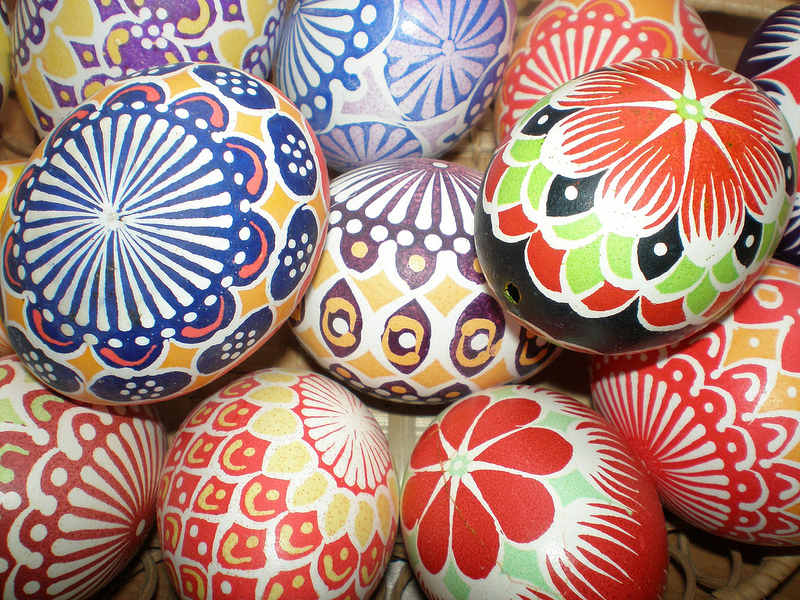
Don’t miss these large Easter markets, sometimes featuring a birch tree decorated with ribbons! Like Christmas markets, they take place in Prague’s main squares from morning to night, and last for almost a month: Old Town Square (not the most artisanal…), Marián Square (Mariánské náměstí), Republic Square (Náměstí Republiky), Wenceslas Square, Peace Square (Náměstí Míru)… As at Christmas, I have a strong preference for the latter! You’ll also often find an Easter market in Anděl in Prague 5, on Kampa Island at the foot of Charles Bridge or at the Castle (Náměstí U svatého Jiří).
At all these markets, two weeks before the Easter weekend and a few days afterwards, you’ll find all the classic Czech handicrafts associated with Easter traditions in small wooden chalets (but also sometimes a program of musical accompaniment on stage with choirs and Czech folk dances).
Don’t miss the traditional hand-painted eggs
The eggs are hand-painted using a variety of techniques: hot beeswax (batik), onion peelings, beet peelings… These decorating techniques have been handed down from generation to generation (often by women), but children also learn them at school in the days leading up to Easter. Known as kraslice (derived from the adjective krásný, meaning “beautiful”, a tradition that began in Moravia as early as the 11th century), they feature geometric or floral designs and are made within each family (especially if there are children). Easter markets often feature egg-making workshops for children. Be careful, these eggs are very fragile, so be sure to protect them if you want to put them in your suitcase as a souvenir! You’ll also find decorative objects of all kinds, toys and the famous whip (pomlázka) used at Easter and not much appreciated by women (I’ll come back to it a little later in this article). And let’s not forget the craftsmen at work, such as the blacksmith, and the many opportunities to dine until sometimes late at night.
Tip 2: Try the gourmet Easter specialties
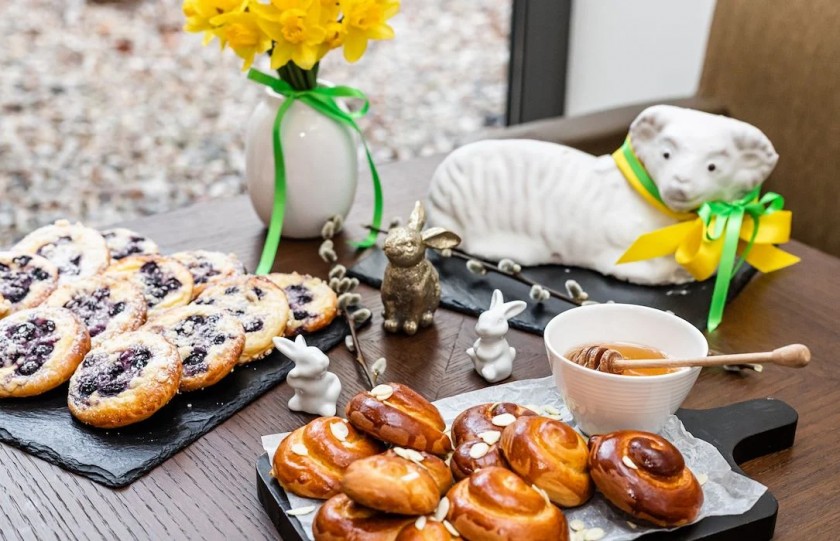
Restaurants serve a traditional Easter menu. These include the inevitable rabbit, but also lamb, asparagus and a typical Easter Monday stuffing (nádivka) combining eggs, smoked meat, bacon and nettles (a dish based on eggs, an ancestral symbol of new life and rebirth). Here are my good addresses: the Café Imperial run by media-savvy chef Zdeněk Pohreich offers a special Easter menu in an incredible Art Deco room. Červený Jelen is also a good address for a special Easter menu!
Taste the Beránek Easter cake, typical with its lamb shape
The restaurants in the Potrefená husa chain (you’ll find one right in the center and another in the Staropramen brewery) also offer the traditional Beránek (“little sheep”) cake, a kind of yoghurt cake in the shape of a lamb (the Alsatian lammele that Jews in ancient times used to make). You’ll find it in bakeries like Eska, pastry shops like Myšák and all supermarkets, along with the no less traditional Mazanec, a raisin Easter brioche covered in flaked almonds that has been made since the 15th century. Delicious buttered for breakfast! Jidáše (or Judas Ropes) are also baked, rolled-up buns representing the rope with which Judas hanged himself after betraying Christ. These are usually served on Green Thursday morning with honey. And for drinks, you’ll also find a green beer on this “Green Thursday”!
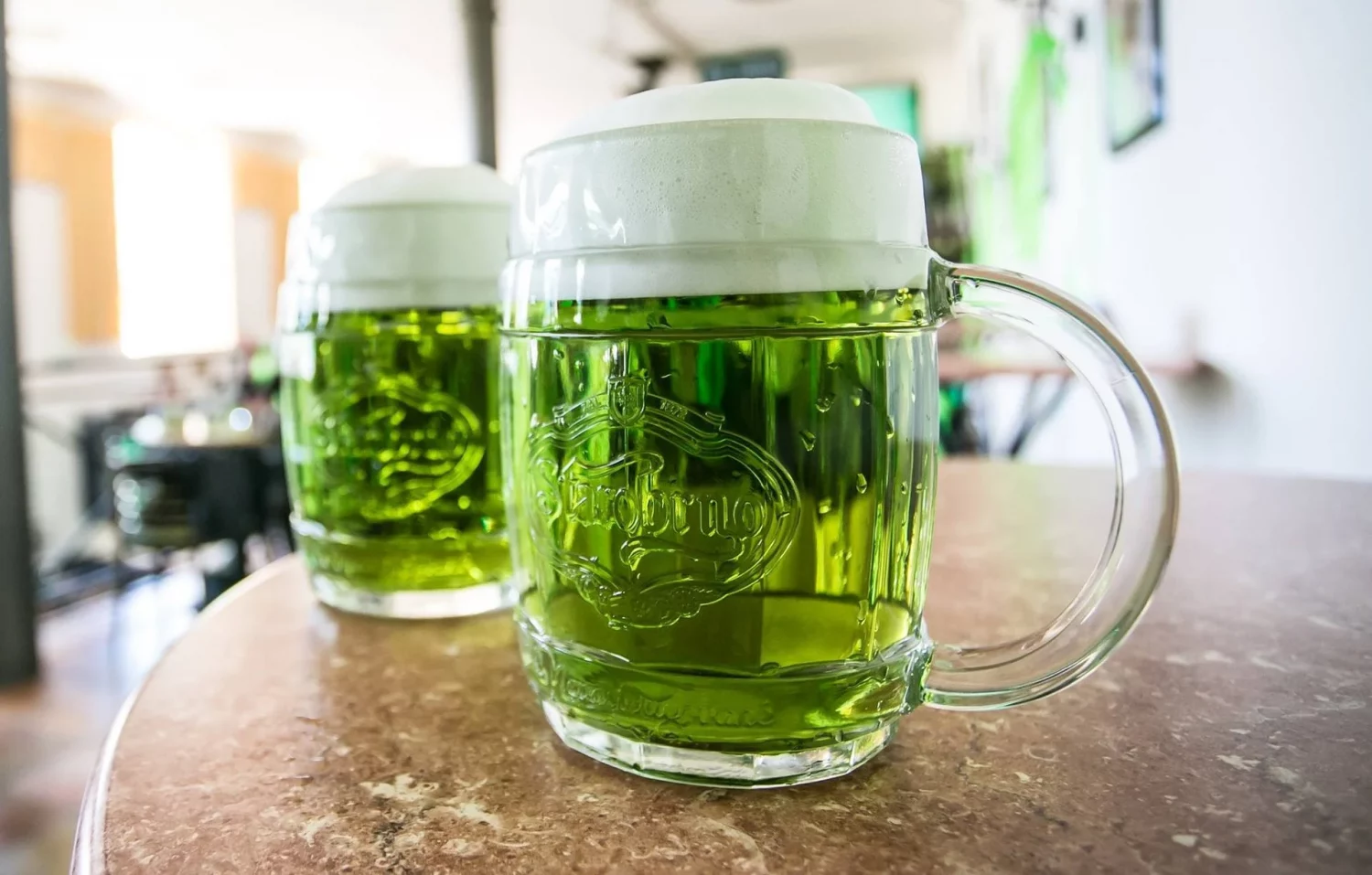
Tip 3: Buy an Easter whip and beat the women around you
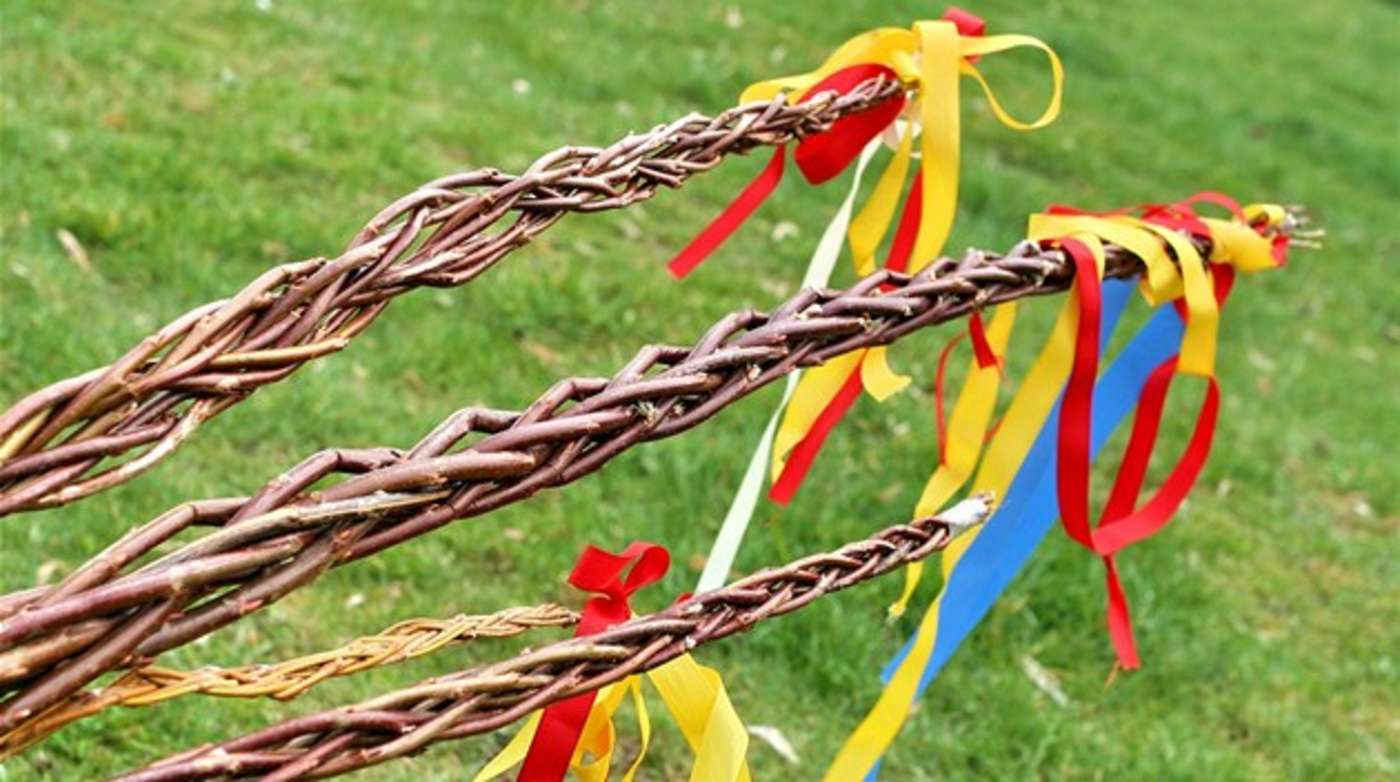
A trip to Prague at Easter is an opportunity to bring back traditional souvenirs. In the markets, you’ll find the famous painted eggs mentioned above. In the past, giving a specially painted egg to a chosen boy was a sign of romance… But the Easter object is undoubtedly the whip (pomlázka, derived from the verb pomladit meaning to rejuvenate, refresh). Made up of nine braided willow branches or twigs (tradition says that fresh willow stems are full of spring energy that goes… directly into the body!), the whip is also decorated with colorful ribbons. You’ll find them everywhere: at Easter markets, of course, but also at florists’ shops and even supermarkets.
Lashings of whip on girls’ bottoms as a token of vitality
A publication shared by Město Valašské Klobouky (@valasskeklobouky) on April 2, 2018 at 6:32 PDT
For a few crowns, you can take home a highly original souvenir from Prague and indulge in this highly controversial pagan tradition (and valorized under Communism to counter Christian Easter). The first mentions of pomlázka in Central Europe date back to the 14th century – when lovers used broomsticks or hands to slap each other – but the Easter folk custom didn’t really develop and become popular in the Czech lands until the 18th and 19th centuries. On Easter Sunday, the girls, from grandmother to granddaughter, decorate their eggs while the boys prepare their whips. And on Easter Monday morning, the boys go to the girls’ houses. The boys sing a little song or recite a little poem, then whip the girls’ legs and buttocks as a token of health, youth, strength and vitality, before being offered an egg or a cake. In Prague, whipping is symbolic, but not always the case in the countryside, where plum alcohol (slivovice, which is offered to visitors in every house) is sometimes used sparingly, with some young girls dreading Easter Monday. Among the older generation, the more visitors you have, the more your family is appreciated in the community. It’s a sign of respect. In Moravia, where the tradition is more enduring, girls may even be thrown into cold water to keep them fresh… The only comfort for girls is that if a boy visits their house after midday, they may also throw a tub of water in his face. It’s also said that leap years “allow” the roles to be reversed, allowing women to spank men. According to a 2023 survey, 44% of women feel pain when whipped, 25% have bruises or other marks and 10% describe feelings of humiliation. A quarter say they feel no negative emotion, but a third of women hate the tradition… In short, consent is still required and this tradition is, in my opinion, destined to disappear.
Another atypical Easter object to be found on the markets is the wooden rattle that the boys shake to frighten Judas from Thursday to Saturday (or to warn people of the time of mass when the bells have gone to Rome). They use it on Easter Saturday in the villages until they’re given some money.
Tip 4: Attend an Easter concert
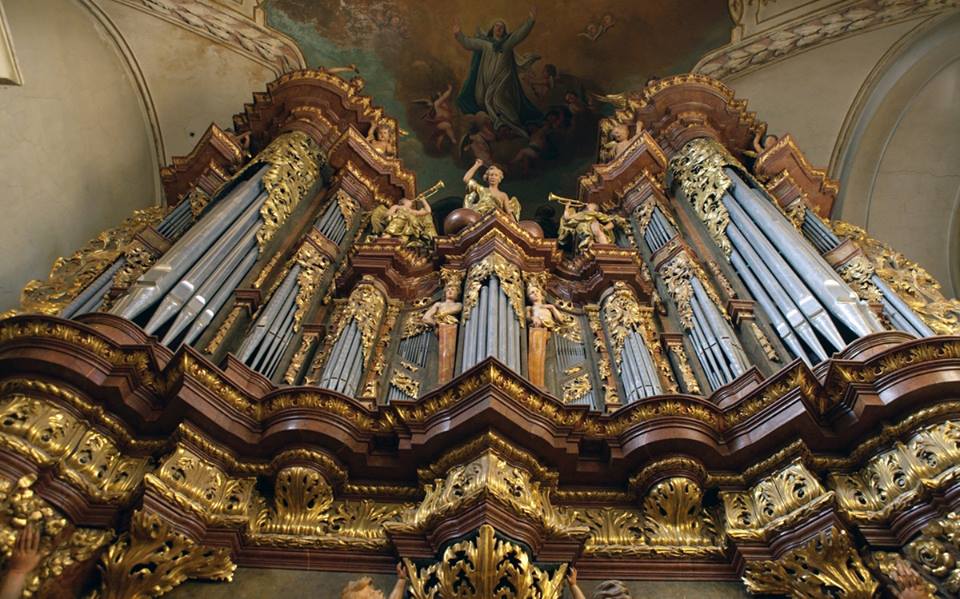
If you like classical music, in addition to the traditional concert halls, you can attend a lovely Easter concert in a church. The most famous concert is at the splendid Basilica of St. James. Originally belonging to the Franciscan convent, the Gothic church of St. James was built in the 14th century and subsequently remodeled in the Baroque period. With its long nave and excellent acoustics, this church is ideal for concerts.
A traditional Easter organ concert in Saint-Jacques church
Renowned organ recitals are performed here, thanks to an 8,277-pipe instrument dating from the 18th century. A concert of sacred music takes place at Easter (Easter Sunday, 5pm). Other venues, such as the Church of St. Nicholas, the Church of St. Simon and St. Jude and the Mirror Chapel of the Clementinum in the Old Town, or the Rudolfinum, also offer Easter concerts.
Basilica of St. James (Svatý Jakub Starší)
Malá Štupartská 6
St. Nicholas Church (Svatý Mikuláše)
Old Town Square
Church of St. Simon and St. Jude (Kostel svatých Šimona a Judy)
Dušní
Clementinum Chapel of Mirrors (Klementinum)
Karlova 1
Tickets can be purchased on site (Karlova 1)
RudolfinumAlšovo nábřeží 12
Finally, there are Easter masses at St. Vitus Cathedral, St. Thomas Church, St. Giles Church, Our Lady of Victory Church (or Church of the Infant Jesus) and, of course, Our Lady of Týn (Old Town Square).